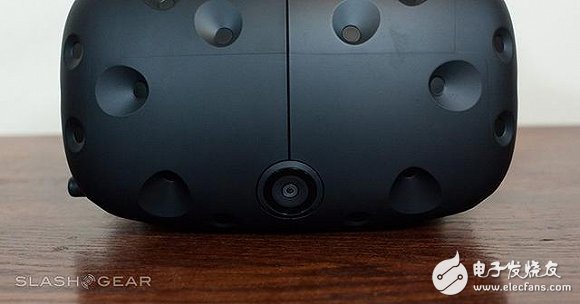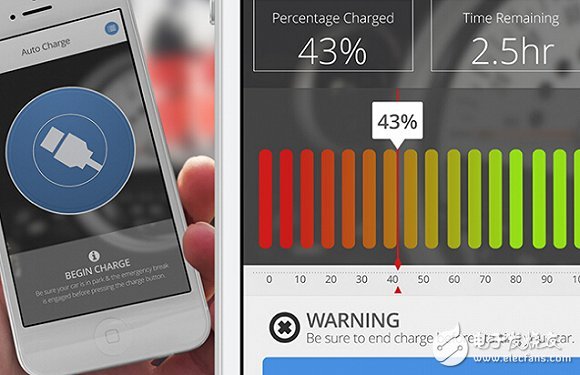As a CNET columnist, Chris Matyszczyk has always been hostile to VR. As early as two years ago, he was in an article titled "Why are these technology companies trying to control our faces?" The article points out the flaws of Oculus Rift and Google glass. Recently, the stubborn old man listed six reasons why VR is boring. By the way, he also ridiculed Trump, who is running for president. On the whole, Chris believes that the current VR equipment is cumbersome and ugly, and the matching handles and peripherals are very cumbersome to use. The content is attracted to the same level as the popular electronic pets of the 1990s, and will soon fall into the cliché. Chris's argument is not groundless. There are certain reasons in many places, but we can't guess the ever-changing technology world. The VR flaws we criticize seem to have solutions with the help of some black technology. Open vision, Vive camera HTC Vive users can see the space positioning device hanging on the wall, thanks to Vive's front camera, in order to meet the needs of some developers, HTC decided to open the use of this camera in the near future . Once the camera's functionality is activated, sensors within all sensing areas are located, and hardware manufacturers can use this feature to develop appropriate peripherals, including a variety of custom handles, special scenes, and engineering entity modeling. AR (Augmented Reality) developers can also use the SDK to make some articles, such as holographic projection technology independent of VR functions, to improve the current hololens vacancy in the MR (mixed reality) field. According to the information disclosed by HTC, the developer has a very low level of permission for the camera, and can only read images such as streaming media for the time being, which may mean that only one more screen recording function will be added in the future. However, this function is not a chicken rib. It can ensure that the user can observe the reality in the helmet and avoid the personal injury caused by accidental collision. Games such as "Golem" can also get good support. Because of the need to split the game experience into VR and non-VR parts, frequent picking of helmets has always been a headache for Highwire Games. Broad activity area, WorldViz warehouse size tracking The tracking technology of mainstream products has its own characteristics. Oculus rift and upcoming PlaystaTIon VR are optical positioning technologies. Rift's hidden infrared and nine-axis devices can obtain accurate spatial coordinates and are not afraid of occlusion. PS VR visible light positioning technology It is a lot worse, it can't run in an environment with too many obstacles, and it will be slower in response. Vive's Lighthouse technology has always been talked about because laser positioning is not only low cost, but also provides a small movable area, the only drawback is that the mechanical control is less durable. However, the size of the room is far from being able to meet the current application development. Due to the limited range of motion, some games in the Vive platform have been forced to join the blink (mobile) mobile function, and its abrupt experience has not been realized by traditional handles. In this case, WorldViz created a warehouse-scale VR tracking technology that will support the mainstream head-end and mobile-side Daydream platform. Warehouse-Scale is capable of locating 10 different objects simultaneously within a 50-meter square with an accuracy of at least the Lighthouse level. Warehouse-Scale is ideal for commercial use, construction of large buildings, restoration of artistic scenes, live sports, etc. It is possible to develop more possibilities through the unique creativity of WorldViz. However, this system requires at least $15,000. Additional equipment is required for additional sensing equipment, and it is difficult for average users to find a 50-square-meter area for their own use. Remove the shackles of cables, nano batteries Since the cable does not have a sensing function, the wearer often cannot determine the specific position of the cable when wearing the head display. At present, there is no dry battery for the mainstream head-end independent power supply, and the non-screen VR device uses the reserve power of the smart phone, and the battery life is a problem. In 2012, Amprius published an article in Nano Letters stating that they have developed a battery using nano-particle yolk shell structure for excellent durability. Recently, Amprius discovered a better manufacturing method. Graphene can make the charge flow more smoothly in the metal wire. The implantation of silicon material has improved the storage capacity and power of the battery. Frankly speaking, although the graphene silicon negative lithium-ion battery is much lower in cost, the capacity is only 10% more than the traditional lithium-ion battery, and it is still at the level of quality change. It is only a development direction and cannot be allowed. The VR device is truly out of the bounds of the cable. Nokia has proposed another solution long ago called remote charging technology. Although it was mainly considered for smartphones at the time, it could be used as a reference. Nokia's Ultra-Wide Band antenna can convert 500MHz-10GHz radio signals from surrounding electrical appliances into electrical energy. However, with the collapse of Nokia's business, this technology seems to have not seen any improvement after three years. Microsoft took over the idea and decided to use the light beam for remote charging. The AutoCharge prototype charger can be fixed in the room. One location, positioned by the Kinect camera and focused on the LED light with the UltraFire CREE XM-L T6. AutoCharge has proven to be practical, but not the best solution. After all, Kinect and UltraFire are not cheap toys, and the sensitivity of Kinect is yet to be verified. In addition, some of the somatosensory devices announced recently can solve the touch problem of VR devices more or less. The implementation of space touch technology can get rid of the limitations of the handle. In addition to the VR category, there are some technologies that can be utilized, such as the flexible screen technology for electronic screens, which can greatly reduce the storage volume of electronic products. In the removal of malicious attitudes, the voice of doubt is indispensable. These suggestions usually become the driving force for technological progress, and proper face-lifting is what we hope to see, even if it is blushing and facing the accusations of everyone. While licking his face, he will still say the last one sincerely - "Well, this thing is really good." Spot Lights Moving Head ,Led Moving Head Spot,Moving Head Spotlight,Spot Moving Head Light Guangzhou Cheng Wen Photoelectric Technology Co., Ltd. , https://www.cwledwall.com

